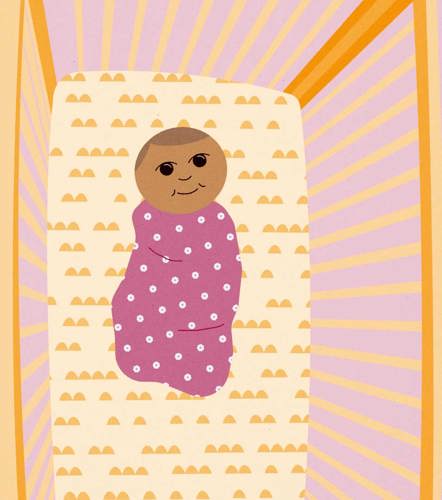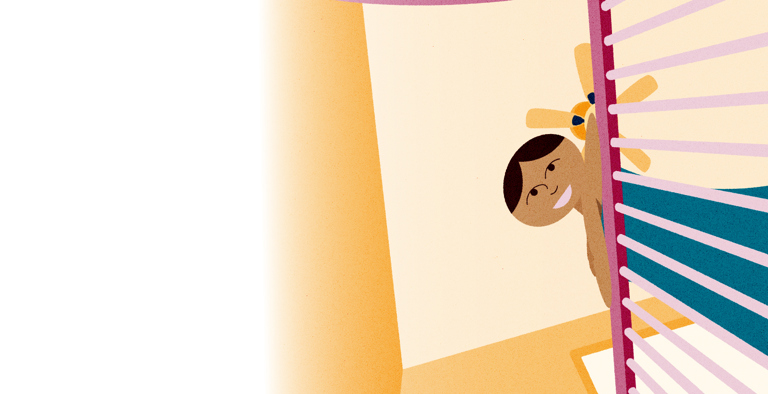 Safe sleep efforts are rewarded every time a baby wakes up to the world. Lying your baby down on their back, alone, in their crib, bassinet, or play yard is the best way for them to sleep safely.
Safe sleep efforts are rewarded every time a baby wakes up to the world. Lying your baby down on their back, alone, in their crib, bassinet, or play yard is the best way for them to sleep safely.
Following the ABC acronym will help you remember the steps:
- Alone
- Back
- Crib
Other practices, like regular prenatal care, breastfeeding, and immunizations, are also important for keeping your baby healthy.
View Wake Safe Infographic View Spanish Wake Safe Infographic View Wake Safe Infographic for Providers View Infant Mortality Data
Safe Sleep Information & Resources
- Babies sleep safest on their backs. Always lay baby face up for sleep. Research has shown that a baby is NOT more likely to choke when on its back.
- Baby should sleep alone in a safe crib.
- Soft objects and loose bedding should be kept out of crib (No bumper pads, pillows, blankets, toys, etc.)
- Room-sharing is advised, but bed-sharing is not. Baby should never share any sleep surface with an adult, a child, or a pet.
- Sleep surfaces matter – firm crib mattresses with no extra padding are safest. Couches, chairs, swings, car seats, air mattresses, and regular beds are unsafe.
- Every sleep time counts – naps and nighttime.
- Keep baby away from secondhand smoke – there is no safe level of secondhand smoke exposure.
- Offer a pacifier at naptime and bedtime as baby is falling asleep.
- Dress baby in light sleep clothing to prevent overheating. If home is cool, use a sleep-sack rather than a loose blanket.
- Baby should never be put to sleep on his or her tummy or side. However, as baby gets older and rolls over in sleep from back to tummy, it is not necessary to change his or her position.
- Give your baby plenty of tummy time when he/she is awake and someone is watching. Supervised tummy time helps strengthen your baby's muscles.
- Products that claim to help prevent SIDS are unproven and can be dangerous. Don’t buy or use them.
When is Swaddling Safe?
A blanket wrapped snuggly around your baby’s body can resemble the mother’s womb and help soothe your newborn baby. The American Academy of Pediatrics (AAP) says that when done correctly, swaddling can be an effective technique to help calm infants and promote sleep. If you plan to swaddle your infant at home, you need to follow a few guidelines to make sure you are doing it safely:
- Place your baby to sleep on his back, every time you put him to sleep. To reduce the risk of SIDS, this is even more important if your baby is swaddled.
- Monitor your baby when swaddled so they don’t accidentally roll over.
- Keep hips loose. Babies who are swaddled too tightly may develop a problem with their hips.
- Stop swaddling by age 2 months, before the baby intentionally starts to try to roll.
- Get more information about swaddling and how to swaddle correctly.
Sudden Infant Death Syndrome (SIDS) is one type of Sudden Unexpected Infant Death (SUID). SUID is a broader classification that includes:
- deaths attributed to SIDS,
- accidental suffocation and strangulation in bed (ASSB),
- ill-defined and unspecified causes,
- and other cases where an unsafe sleep environment was mentioned on the death certificate.
To prepare for a new baby, families should plan ahead to make sure they have a safe place for baby to sleep.
Here are some things to look for to help you determine whether your baby’s crib or Pack-N-Play is safe:
Your baby’s crib may NOT BE SAFE if:
- Corner posts or decorative pieces higher than 1⁄16 of an inch that baby’s clothing can catch on
- Slots wider than 23⁄8 inches (about the width of a soda can)
- Missing, cracked, loose, or broken slats
- Cutouts on the head or footboard
- Drop down sides (crib)
- Broken, loose, missing parts, broken or improperly installed brackets or hardware
- Loose sides
- A mattress that fits in the crib loosely (a gap more than the width of two fingers)
- Crib bumper pads
- Anyone sleeping in the crib along with baby
- Placed under an area where window cords are within reach
Your baby’s playpen may NOT BE SAFE if:
- Mesh less than 1⁄4 inch in size, smaller than the tiny buttons on a baby’s clothing
- Mesh with tears, holes, or loose threads, not securely attached to the top rail and floor plate
- Sides that form a sharp V when folded, posing a risk for strangulation
- Sides that will not lock in the up position.
- Any padding other than the mattress that came with the unit
Some communities in South Dakota have incentive programs that reward pregnant women and new moms for their efforts to stay healthy by providing them with products such as cribs, clothing, diapers, and other infant care supplies according to credits that are earned.
Department of Health offices can link families to incentive programs and resources in their communities to provide a safe infant sleep environment.
Find your local South Dakota Department of Health office.
Or call 1-800-305-3064
Sleep-related infant deaths are a serious concern. Unsafe sleep environments put babies at higher risk for tragedy—and many of these deaths can be prevented.
- Between 2019 and 2023, 89 sleep-related infant deaths were reviewed by the South Dakota Child Death Review team.
- Sudden Unexpected Infant Death (SUID) accounts for nearly 1 in 5 infant deaths in South Dakota, with unsafe sleep conditions being a major contributing factor.
- 63% of these sleep-related infant deaths occurred while baby was sharing a sleep surface with an adult and/or child.
- Unsafe sleep environments include adult beds, couches, chairs, car seats, swings, rock ‘n plays, or cribs that do not meet safety guidelines.
- 87% of these sleep-related infant deaths were considered potentially preventable after review.
Source: South Dakota Child Death Review, 2019–2023.

